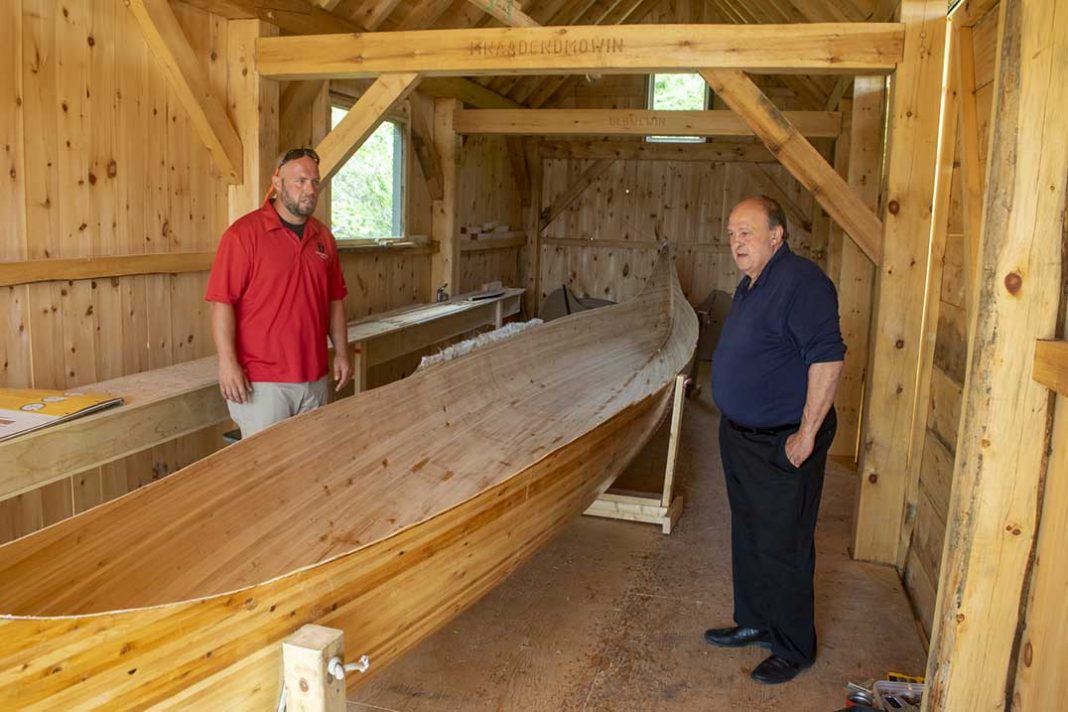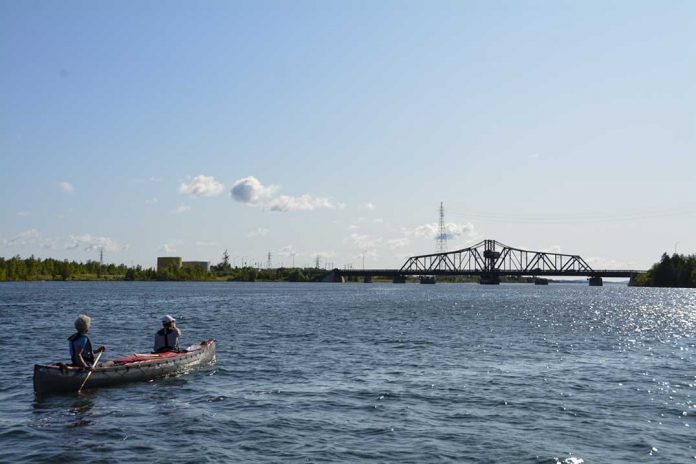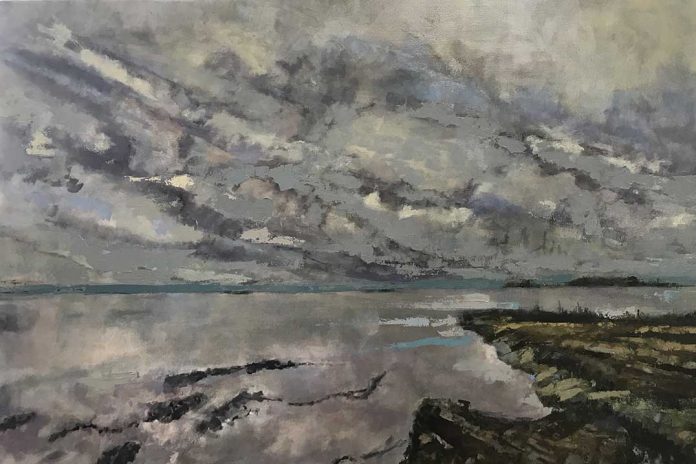AUNDECK OMNI KANING – Ontario Associate Minister of Mental Health and Addiction Michael Tibollo recently visited Gwekwaadziwin Miikan in Aundeck Omni Kaning to learn more about the unique program that provides land-based treatment for Indigenous youth and young adults.
“I applaud this program. I’m so happy as a minister that the community has land-based healing available to help Indigenous youth,” said Mr. Tibollo during the visit.
“This is reconciliation to me, giving opportunities to heal, grow and have a life that every one of us as Ontarians deserves.”
Gwekwaadziwin Miikan, or Gwek for short, started accepting clients last May and offers a much more in-depth program than many other addiction and mental health treatment offerings. The Seven Grandfathers program, which is available for both Indigenous and non-Indigenous persons between the ages of 19 and 30, incorporates 90 days on the land to serve as a basis for healing.
The residency phase runs from six to 12 weeks and allows participants to participate in education, develop life skills, therapeutic treatment and outdoor experiential learning. A requirement for this phase is that all clients must be actively working, volunteering or studying. The current job-finding success rate sits at an impressive 100 percent.
After this phase comes aftercare, when clients gradually shift back into their regular life. Gwek staff follow up with them on a regular basis, though executive director Sam Gilchrist notes that this can be a challenge.
“Measurement is tough at times because of the transience of the population. Our staff have been turning to social media to keep in touch,” he said. Despite its challenges, he said aftercare is the keystone of the program that makes it a success overall. Clients often thrive in the land-based portion of the program but can easily lose track of their goals when thrust back into their daily lives.
Another element of the aftercare which makes it a success is the support offered to family members and other close relations of the client. These individuals can act as partners in the healing journey and offer support at home while also trying to minimize behaviours that may reduce a client’s success.

There also exists a sister program for youth aged 13 to 19 called the Four Directions. This program is still in the works pending government funding and Mr. Gilchrist said they have consulted Jordan’s Principle, a Canadian policy that aims to ensure all Indigenous children living on and off reserve have equal access to government-funded public services as other populations.
The Gwek residence facility is designed to be client-centric and its goal is to help participants find their identity in order to create resiliency. The programming at the centre and on the land incorporates elements of cognitive behaviour therapy (CBT) and dialectical behaviour therapy (DBT) though the practitioners do not rely on these for their treatment.
Accommodations on the land are spartan. Three cabins exist at the facility’s main summer site on Clapperton Island, one each for men, women and staff. Inside the uninsulated structures are a handful of cots with a sleeping bag atop each one. Some participants have a guitar or a few photos of loved ones next to their cots.
The land-based portion includes therapy, healing circles and sharing in chores such as cooking, cleaning and gathering firewood. During the hunting season and the winter, the program moves into prospector tents. It also changes locations depending on the time of year and the needs of the group.
When Mr. Tibollo visited the land-based therapy site last week, he took part in a talking circle during which counsellors, staff and clients shared their experiences and what the program meant to them. Some had just joined the on-the-land program while others were one day away from graduation.
One client shared just how much the program has meant to them and became emotional when describing just how much they felt that they were part of a family. Mr. Gilchrist acknowledged that a great deal of trauma originates in a family setting, so to see these individuals feeling like part of a healthy family once more can have profound effects.
The clients’ start times are staggered in part so new arrivals can see the impacts after being in the program for some time. That gap was evident at the talking circle, with new arrivals being hesitant to say much at all and those on the cusp of graduation willing to share more about their experience.
Another major factor that fosters the program’s success is the element of trust. Almost, if not all of the counsellors and staff at the facility have lived experience with trauma. The vast majority of staff members are Indigenous and share similar language and life experiences with the clients. Because of this, Mr. Gilchrist said they may be quicker to open up and trust counsellors who are attempting to help them heal.
He added that he was appreciative of Mr. Tibollo making the trip to visit the operation.
“It was a great visit and very positive. As we continue to advocate for further funding gaps, it’s these sorts of visits that really are beneficial and make it seem promising,” said Mr. Gilchrist.
Mr. Tibollo said he was very impressed with the Gwekwaadziwin Miikan program and that he would be keeping it in consideration as the province develops its mental health strategy.





